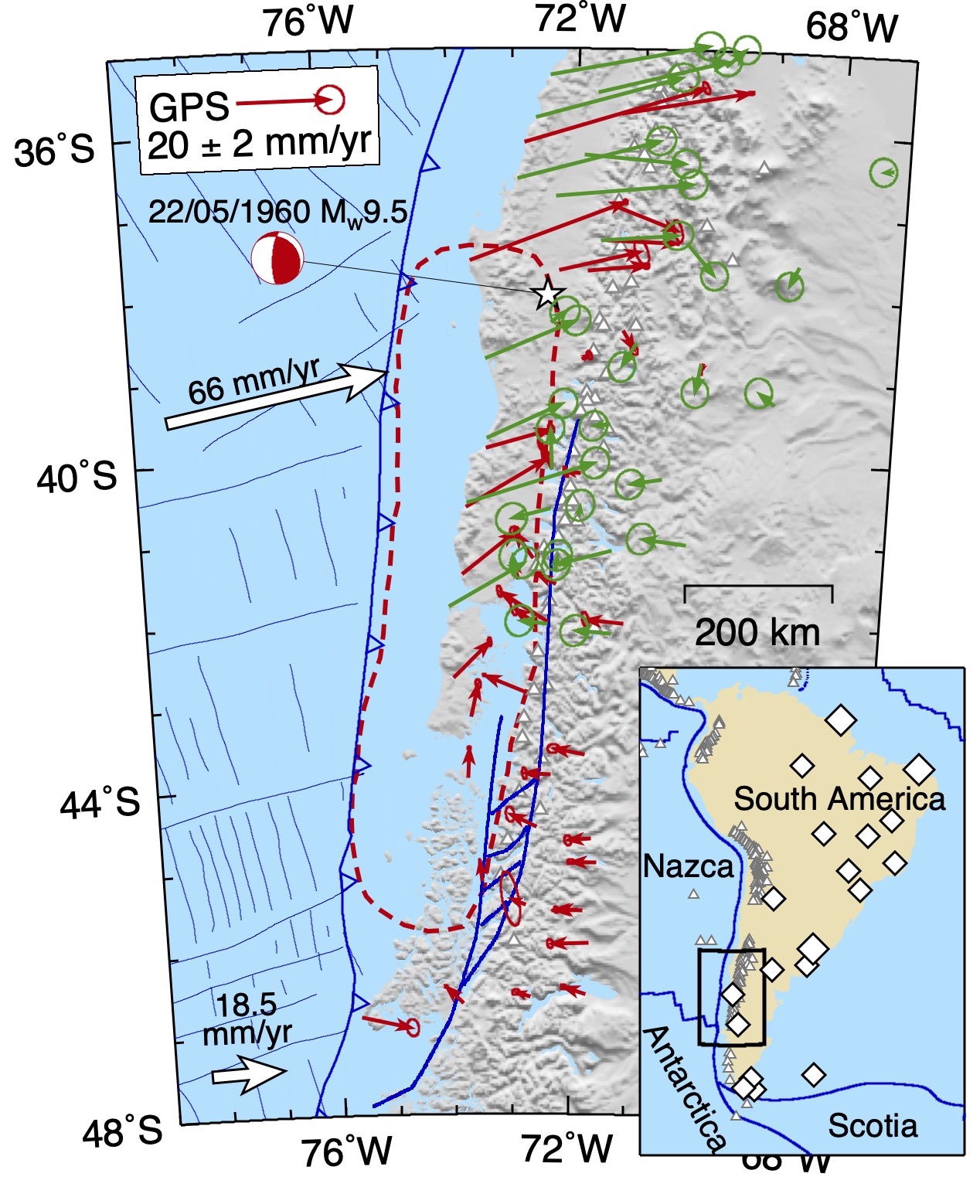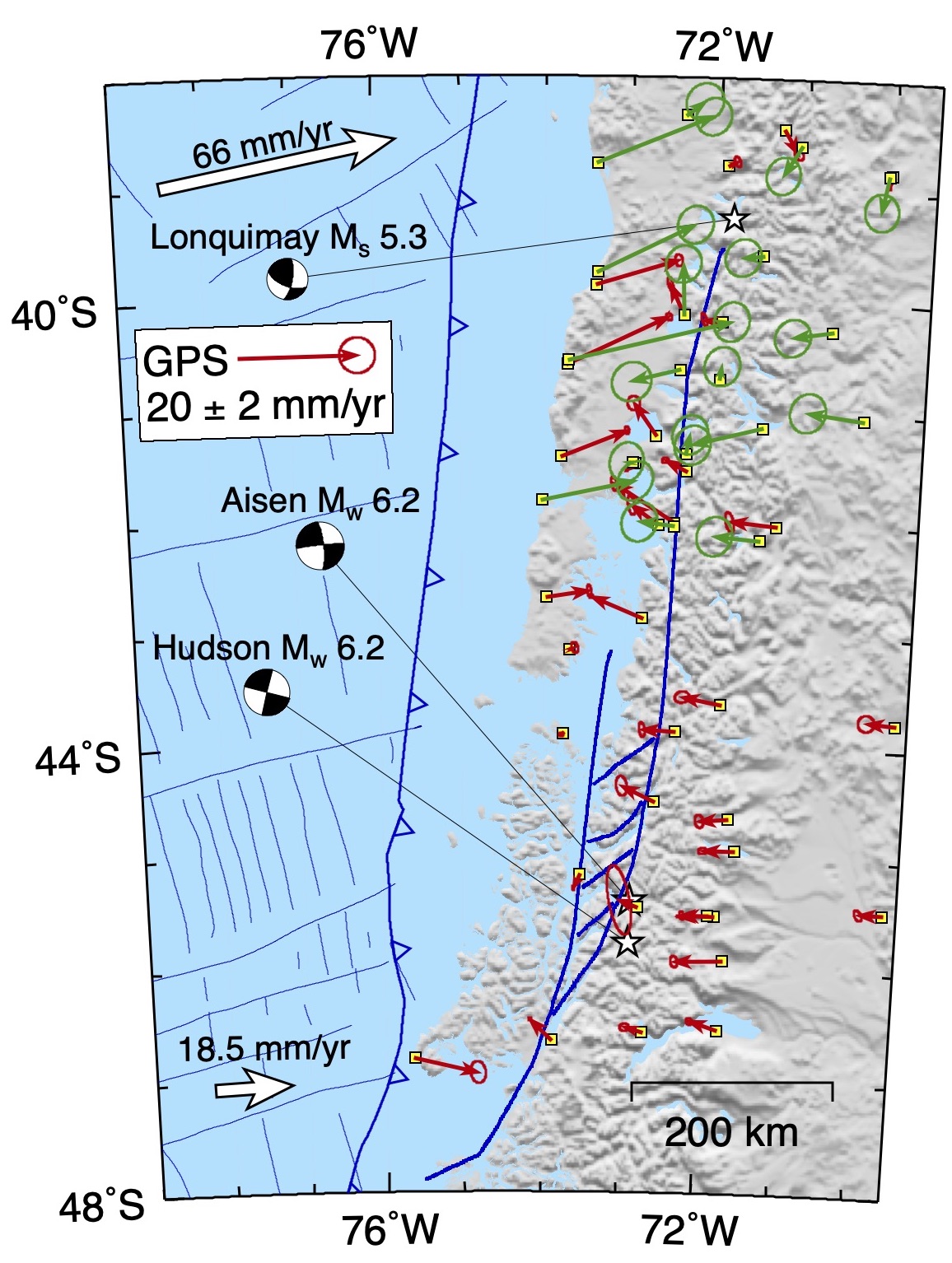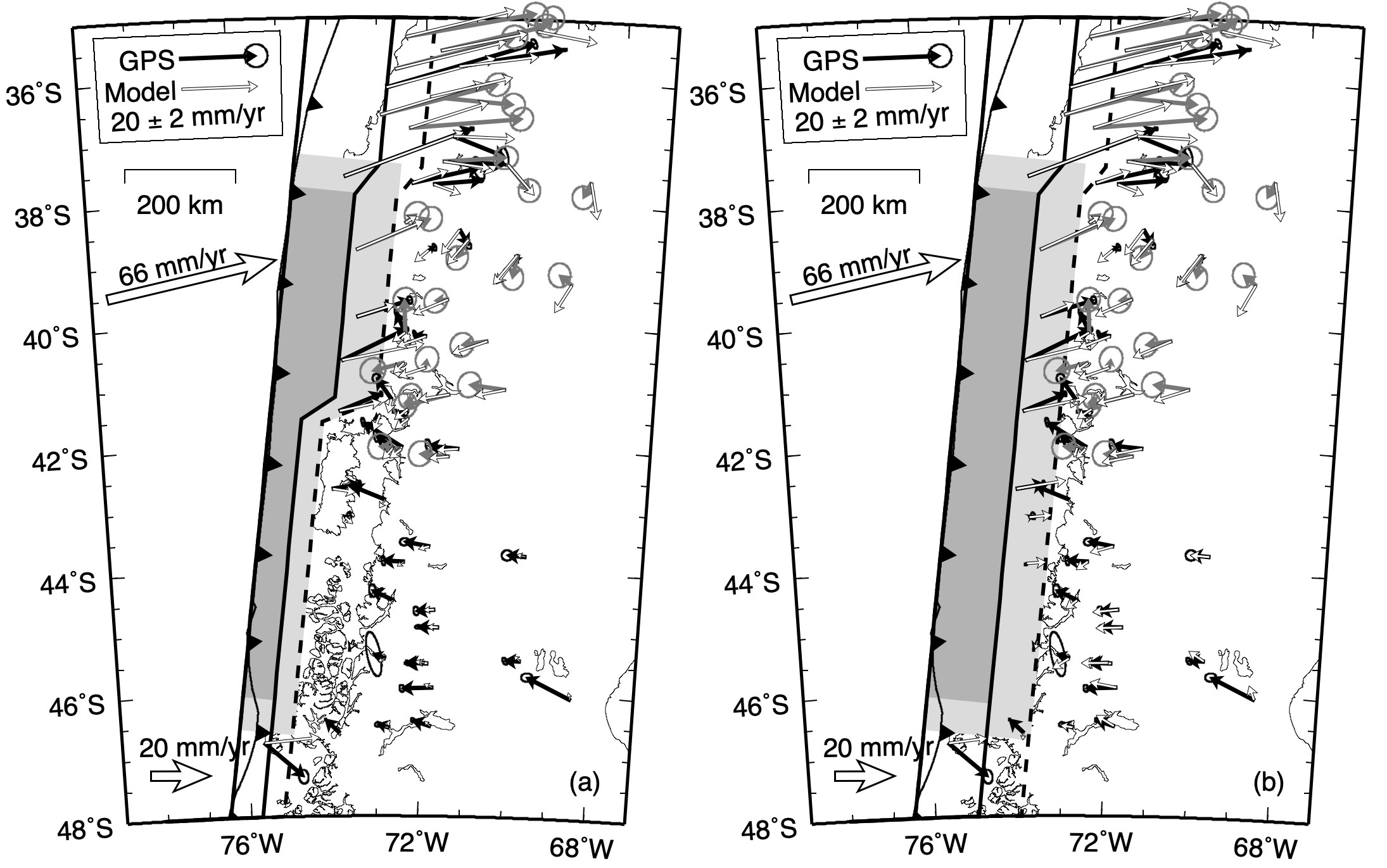

Temporary deformation in great earthquake cycles and permanent shear deformation associated with oblique plate convergence both provide critical clues for understanding geodynamics and earthquake hazard at subduction zones. In the region affected by the Mw 9.5 great Chile earthquake of 1960, we have obtained GPS observations that provide information on both types of deformation.

The new observations revealed a pattern of opposing (roughly arc-normal) motion of coastal and inland sites, consistent with what was reported earlier for the northern part of this region. The new observations also provide the first geodetic evidence for the dextral motion of an intravolcanic arc fault system and the consequent northward translation of a forearc sliver. The sliver motion can be modeled using a rate of 6.5 mm/a, accommodating about 30% of the margin-parallel component of Nazca–South America relative plate motion, with the rate diminishing to the north.

Furthermore, the new GPS observations show a southward decrease in margin-normal velocities of the coastal area. We prefer explaining the southward decrease in terms of changes in the width or frictional properties of the megathrust seismogenic zone. Because of the much younger age of the subducting plate and warmer thermal regime in the south, the currently locked portion of the plate interface may be narrower. Using a three-dimensional viscoelastic finite element model of postseismic and interseismic deformation following the 1960 earthquake, we demonstrate that this explanation, although not unique, is consistent with the GPS observations to the first order.

This work was published on G3:
Wang, K., Y. Hu, M. Bevis, E. Kendrick, R. Smalley Jr., R.B. Vargas, & E. Lauría (2007), Crustal motion in the zone of the 1960 Chile earthquake: Detangling earthquake-cycle deformation and forearc-sliver translation, G3, 8(10), Q10010, doi:10.1029/2007GC001721. Link
Copyright © Geodynamics Research Center,USTC/DSEL All Rights Reserved